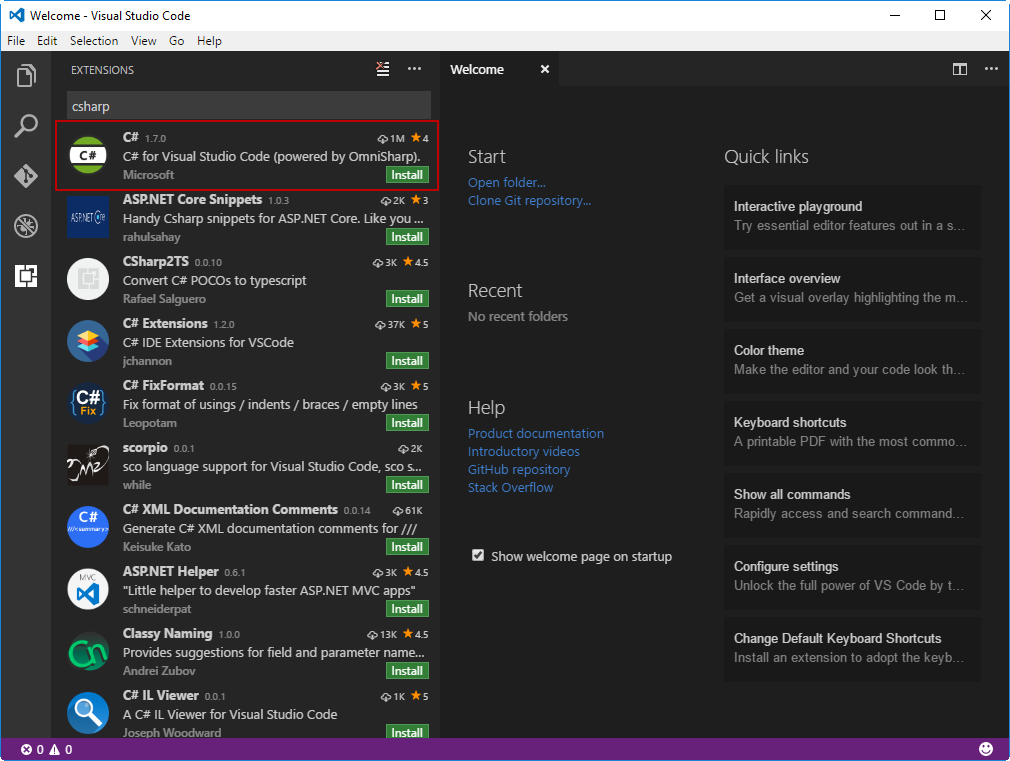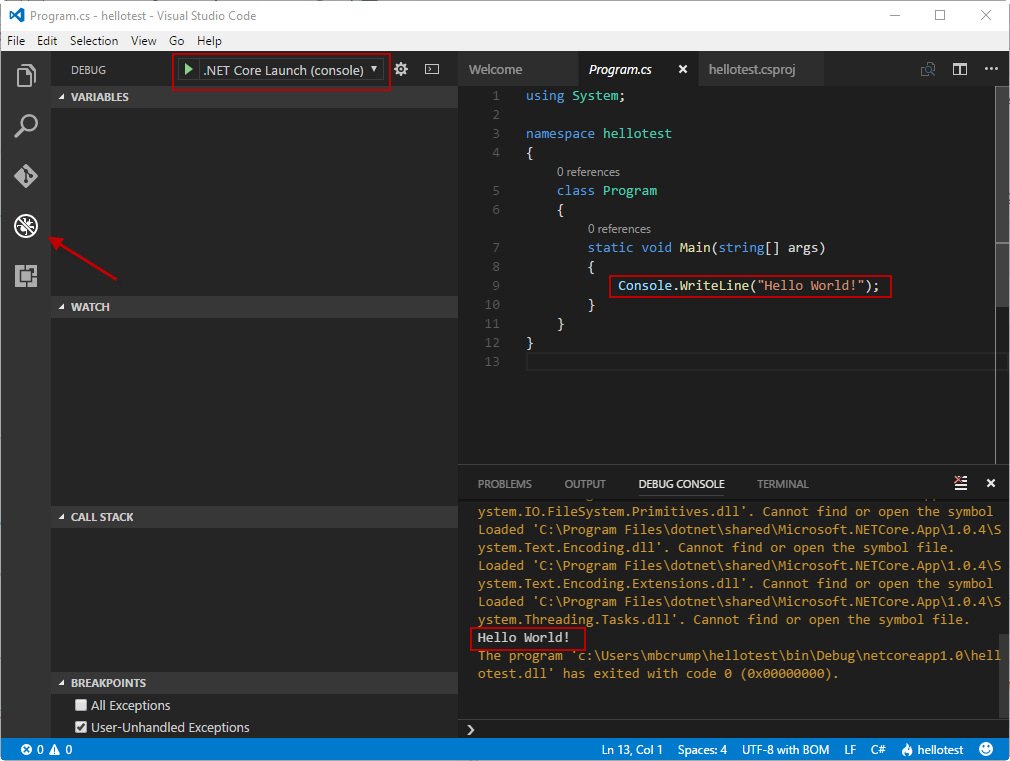Day 8 - Using Visual Studio Code with a .NET Core Console Application
Disclaimer: I am not on the .NET Core Team. I used the tools available publicly and have no insights into the future of .NET Core. It looks very bright though. :)
Intro
A complete list of post in this series is included below :
- Day 1 - Installing and Running .NET Core on a Windows Box
- Day 2 - Taking a Look at the Visual Studio Templates for .NET Core
- Day 3 - Running a .NET Core app on a Mac
- Day 4 - Creating a NuGet Package from .NET Core app
- Day 5 - Creating a Test Project from .NET Core
- Day 6 - Migrating an existing .NET Core to csproj
- Day 7 - Creating an ASP.NET Core Web Application
- Day 8 - Using Visual Studio Code with a .NET Core Console Application
- Day 9 - Creating a .NET Core Console App inside of Visual Studio Code
- Day 10 - Using JetBrains Rider with a .NET Core Console Application
In this post, we’re going to look at how you can use Visual Studio Code with a .NET Core Console application.
Install Visual Studio Code
Before we do anything, make sure that you have installed Visual Studio Code. If you haven’t downloaded it before, then you can find it here. After it is installed, your powerful new editor is ready to go:

Launch VS Code Quick Open by pressing (Ctrl+P) and paste ext install csharp. Take the first option as highlighted below:

I typically hit the reload button afterwards to make sure that it took.
Back to the Command Prompt
Note: I’m using the latest RC of .NET Core and YES, I’m very aware that you can create a .NET Core Console app inside of VS Code. Maybe a post for another day?
To create a new console app, I typed
dotnet new console
If I didn’t specify it then it would have created a console app anyways (in the current LTS), but we need to get into the habit of specifying the type as it may change.
Restore the packages by typing dotnet restore and build it with dotnet build.
Run the app with dotnet run (again nothing new here) and you’ll see the following:
C:\Users\mbcrump\helloworld>dotnet run
Hello World!
If you examine the Program.cs file, then it has the following code:
using System;
namespace ConsoleApplication
{
public class Program
{
public static void Main(string[] args)
{
Console.WriteLine("Hello World!");
}
}
}
Just keep in mind here that it displays “Hello World”.
Pro tip: You can open files directly in VS Code from the command prompt with code filename.cs.
Inside of Visual Studio Code
Switch back over to Visual Studio Code and open the folder of the Console app that you just created.
You will be prompted of a warning and missing assets. Make sure that you yes and restore as shown below:

Click on the Debug icon, and make sure .NET Core Launch is selected and hit the run button. You should be able to see in the Debug Console the result of your console app.

Ignore the errors in this screenshot as I’ve been putting .NET Core through the ringer :)
Wrap-up
As always, thanks for reading and smash one of those share buttons to give this post some love if you found it helpful. Also, feel free to leave a comment below or follow me on twitter for daily links and tips.

Leave a Comment